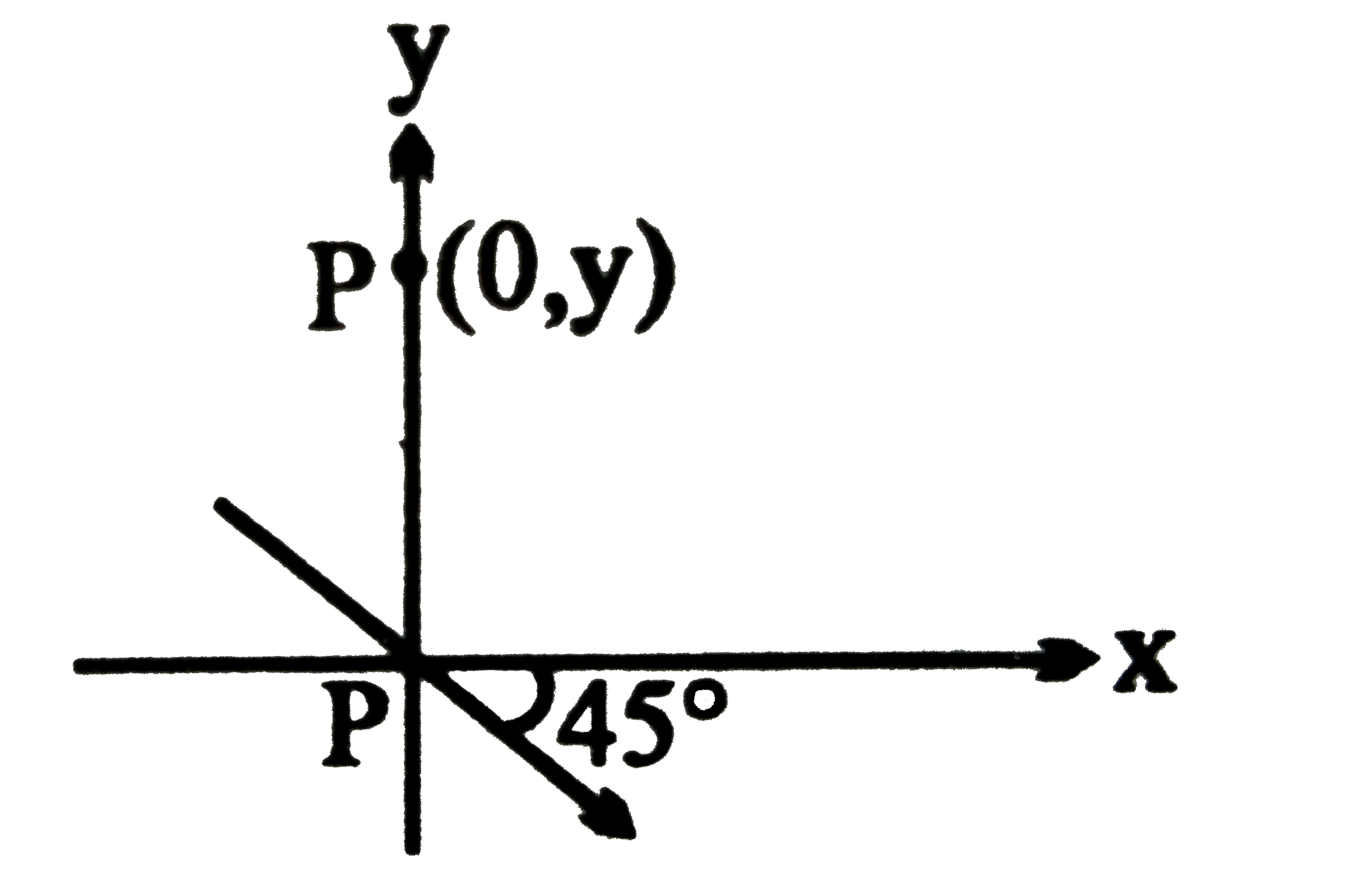An electric dipole of (100ˆk pC-m is located at origin. Determine the field and potential at point P(1m,π3,π2) in spherical coordinate system p(r,θ,ϕ)
To determine the electric field and potential at point P(1,π3,π2) due to an electric dipole located at the origin, we can follow these steps:
Step 1: Identify the dipole moment
The dipole moment →p is given as 100^kpC-m. We can convert this to SI units:
→p=100×10−12^kC-m=1×10−10^kC-m
Step 2: Convert spherical coordinates to Cartesian coordinates
The point P is given in spherical coordinates as (r,θ,ϕ)=(1,π3,π2). We convert these to Cartesian coordinates using the formulas:
x=rsin(θ)cos(ϕ)
y=rsin(θ)sin(ϕ)
z=rcos(θ)
Substituting the values:
x=1⋅sin(π3)⋅cos(π2)=1⋅√32⋅0=0
y=1⋅sin(π3)⋅sin(π2)=1⋅√32⋅1=√32
z=1⋅cos(π3)=1⋅12=12
Thus, the Cartesian coordinates of point P are (0,√32,12).
Step 3: Calculate the potential V at point P
The potential V due to a dipole at a point in space is given by:
V=14πϵ0→p⋅^rr2
where ^r is the unit vector in the direction of →r.
First, we find ^r:
^r=→rr=(0,√32,12)1=(0,√32,12)
Now calculate →p⋅^r:
→p=(0,0,1×10−10)and^r=(0,√32,12)
→p⋅^r=0⋅0+0⋅√32+(1×10−10)⋅12=1×10−102=5×10−11
Thus, the potential V becomes:
V=14πϵ05×10−1112
Using ϵ0≈8.85×10−12C2/N m2:
V=5×10−114π(8.85×10−12)≈5×10−111.112×10−10≈0.449V
Step 4: Calculate the electric field →E at point P
The electric field →E due to a dipole is given by:
→E=14πϵ0(3(→p⋅^r)^r−→pr3)
Substituting →p⋅^r=5×10−11 and r=1:
→E=14πϵ0(3(5×10−11)^r−(0,0,1×10−10)13)
Calculating 3(5×10−11)^r:
3(5×10−11)^r=(0,15√32×10−11,152×10−11)
Now substituting into the electric field equation:
→E=14πϵ0((0,15√32×10−11,152×10−11)−(0,0,1×10−10))
=14πϵ0((0,15√32×10−11,152×10−11−1×10−10))
Calculating the z-component:
152×10−11−1×10−10=152×10−11−202×10−11=−52×10−11
Thus, the electric field vector becomes:
→E=14πϵ0(0,15√32×10−11,−52×10−11)
Final Results
- The potential V at point P is approximately 0.449V.
- The electric field →E at point P is:
→E≈14πϵ0(0,15√32×10−11,−52×10−11)
The dipole moment →p is given as 100^kpC-m. We can convert this to SI units:
→p=100×10−12^kC-m=1×10−10^kC-m
The point P is given in spherical coordinates as (r,θ,ϕ)=(1,π3,π2). We convert these to Cartesian coordinates using the formulas:
x=rsin(θ)cos(ϕ)
y=rsin(θ)sin(ϕ)
z=rcos(θ)
x=1⋅sin(π3)⋅cos(π2)=1⋅√32⋅0=0
y=1⋅sin(π3)⋅sin(π2)=1⋅√32⋅1=√32
z=1⋅cos(π3)=1⋅12=12
The potential V due to a dipole at a point in space is given by:
V=14πϵ0→p⋅^rr2
where ^r is the unit vector in the direction of →r.
^r=→rr=(0,√32,12)1=(0,√32,12)
→p=(0,0,1×10−10)and^r=(0,√32,12)
→p⋅^r=0⋅0+0⋅√32+(1×10−10)⋅12=1×10−102=5×10−11
V=14πϵ05×10−1112
V=5×10−114π(8.85×10−12)≈5×10−111.112×10−10≈0.449V
The electric field →E due to a dipole is given by:
→E=14πϵ0(3(→p⋅^r)^r−→pr3)
→E=14πϵ0(3(5×10−11)^r−(0,0,1×10−10)13)
3(5×10−11)^r=(0,15√32×10−11,152×10−11)
→E=14πϵ0((0,15√32×10−11,152×10−11)−(0,0,1×10−10))
=14πϵ0((0,15√32×10−11,152×10−11−1×10−10))
152×10−11−1×10−10=152×10−11−202×10−11=−52×10−11
→E=14πϵ0(0,15√32×10−11,−52×10−11)
- The potential V at point P is approximately 0.449V.
- The electric field →E at point P is:
→E≈14πϵ0(0,15√32×10−11,−52×10−11)
Topper's Solved these Questions
- ELECTROSTATIC POTENTIAL AND CAPACITANCE BOOK - AAKASH INSTITUTECHAPTER - ELECTROSTATIC POTENTIAL AND CAPACITANCE EXERCISE - EXERCISE
20 Videos
- ELECTROSTATIC POTENTIAL AND CAPACITANCE BOOK - AAKASH INSTITUTECHAPTER - ELECTROSTATIC POTENTIAL AND CAPACITANCE EXERCISE - ASSIGNMENT SECTION - A
47 Videos
- ELECTROSTATIC POTENTIAL AND CAPACITANCE BOOK - AAKASH INSTITUTECHAPTER - ELECTROSTATIC POTENTIAL AND CAPACITANCE EXERCISE - SECTION-I Subjective Type Questions
5 Videos
- ELECTROMAGNETIC WAVESBOOK - AAKASH INSTITUTECHAPTER - ELECTROMAGNETIC WAVESEXERCISE - ASSIGNMENT SECTION - D Assertion-Reason Type Questions
25 Videos
- GRAVITATION BOOK - AAKASH INSTITUTECHAPTER - GRAVITATION EXERCISE - ASSIGNMENT SECTION - D (ASSERTION-REASON TYPE QUESTIONS)
16 Videos
Similar Questions
Knowledge Check
As charge q=1μC is placed at point (1m,2m,4m). Find the electric field at point P(0,−4m,3m)
A236.8N/CB200N/CC23N/CD250N/CTwo small electric dipoles each of dipole moment pˆi are situated at (0,0,0) and (r,0,0). The electric potential at a point (r2,√3r2,0) is:
Ap4π∈0r2B0Cp2π∈0r2Dp8π∈0r2An electric dipole of moment rp=(ˆi+2ˆj)×10−28Cm is at origin. The electric field at point ( 2,4) due to the dipole is parallelto
Aˆi+2ˆjB2ˆi+ˆjCˆi−2ˆjD2ˆi−ˆj
Find the distance between points P(2,−π6)andQ(3,−π6) (i) if these points are in rectangular cartesian coordinate system
View SolutionFind the distance between points P(2,−π6)andQ(3,−π6) (i) if these points are in rectangular cartesian coordinate system.
View SolutionIf by shifting the origin at (1,1) the coordinates of a point P become (cosθ,cosϕ) then the original coordinates of P were
View SolutionAn electric dipole is placed along x–axis at the origin as shown in the figure. Electric field at the point P is parallel to the y–axis. If x–coordinate of P √2 is m, what is its y–coordinate?
View SolutionA short electric dipole is placed along y-axis at the origin. The electric field vector at a point P on x-axis is →E1. The dipole is rotated by π2 at its position . Now, the electric field vector at point P is →E2. Select the correct alternative(s) :
View Solution

 .
.